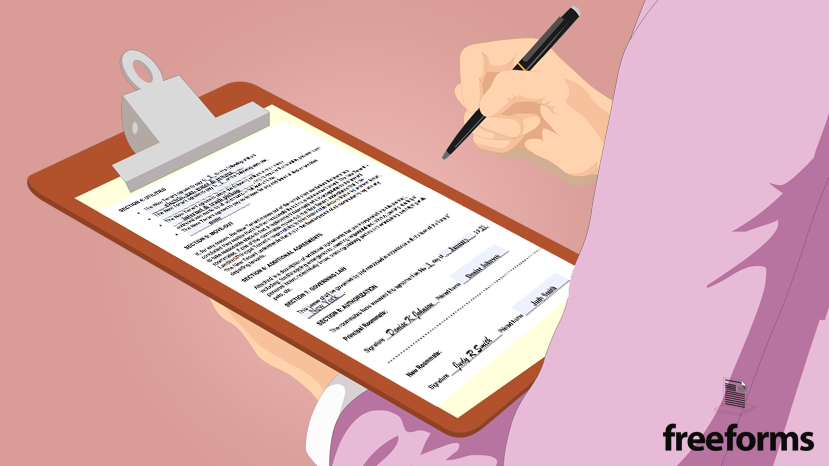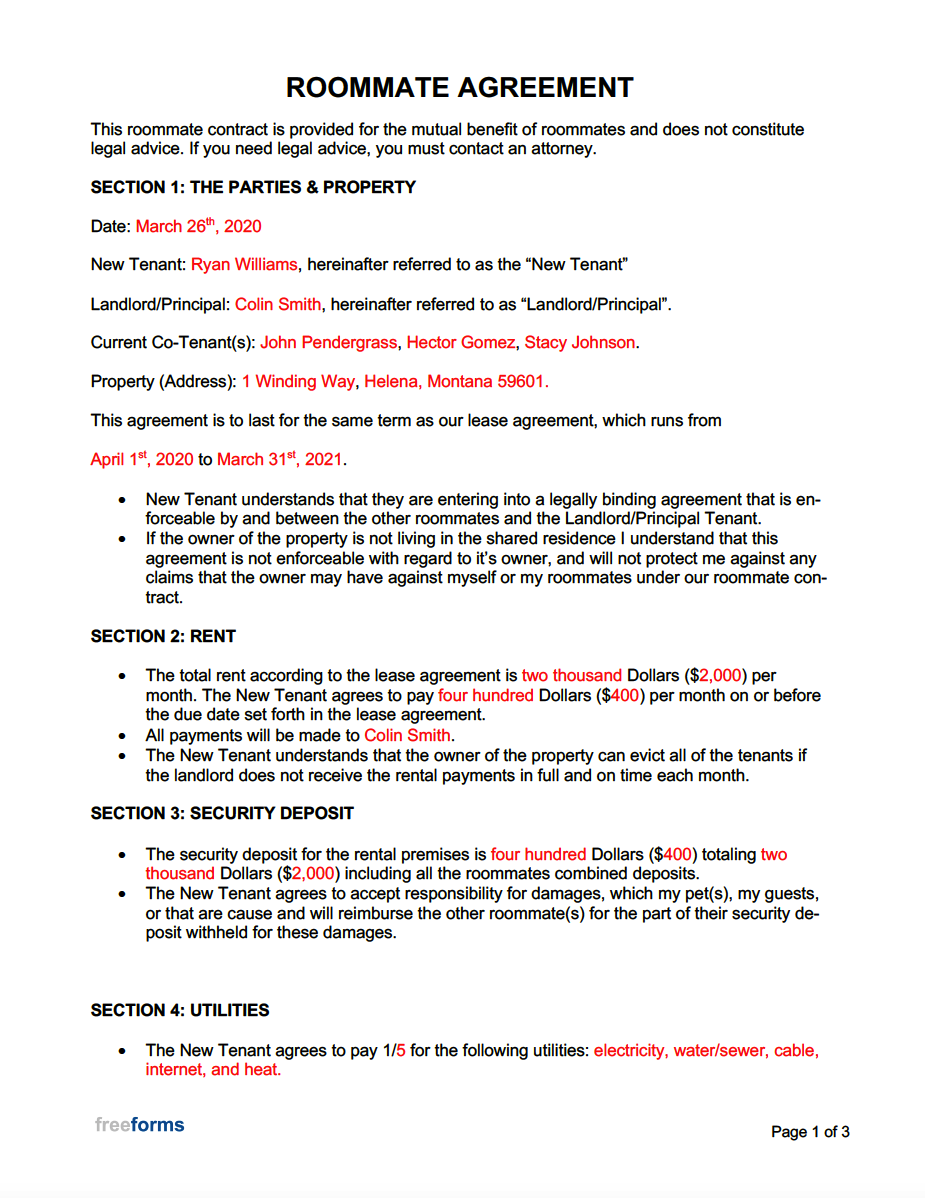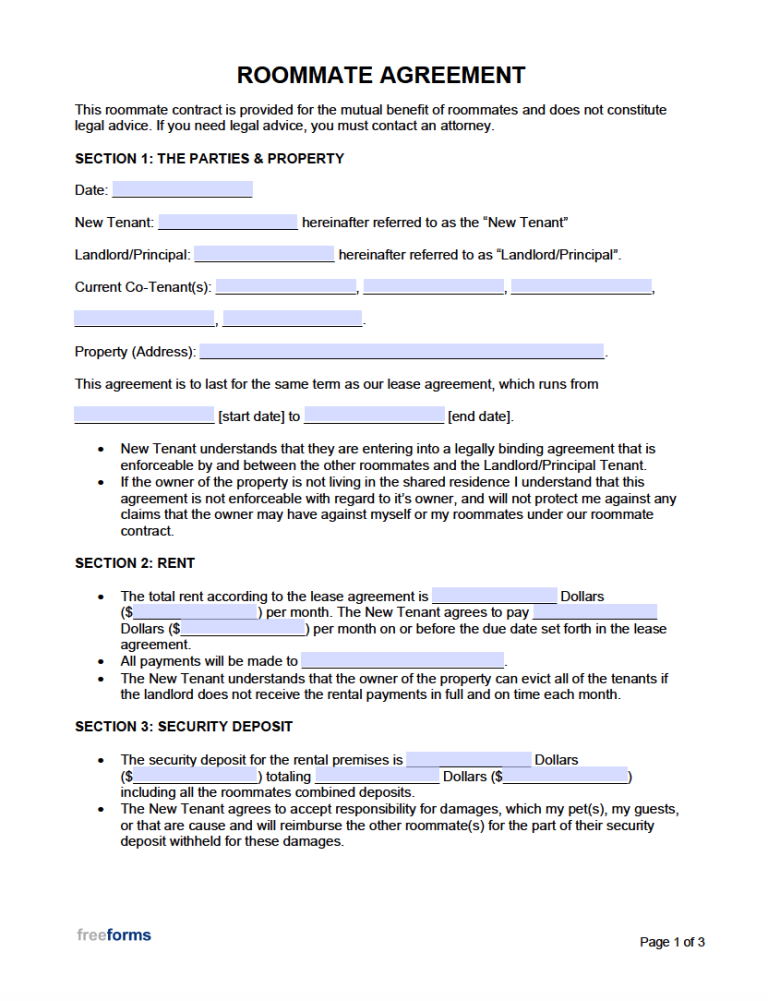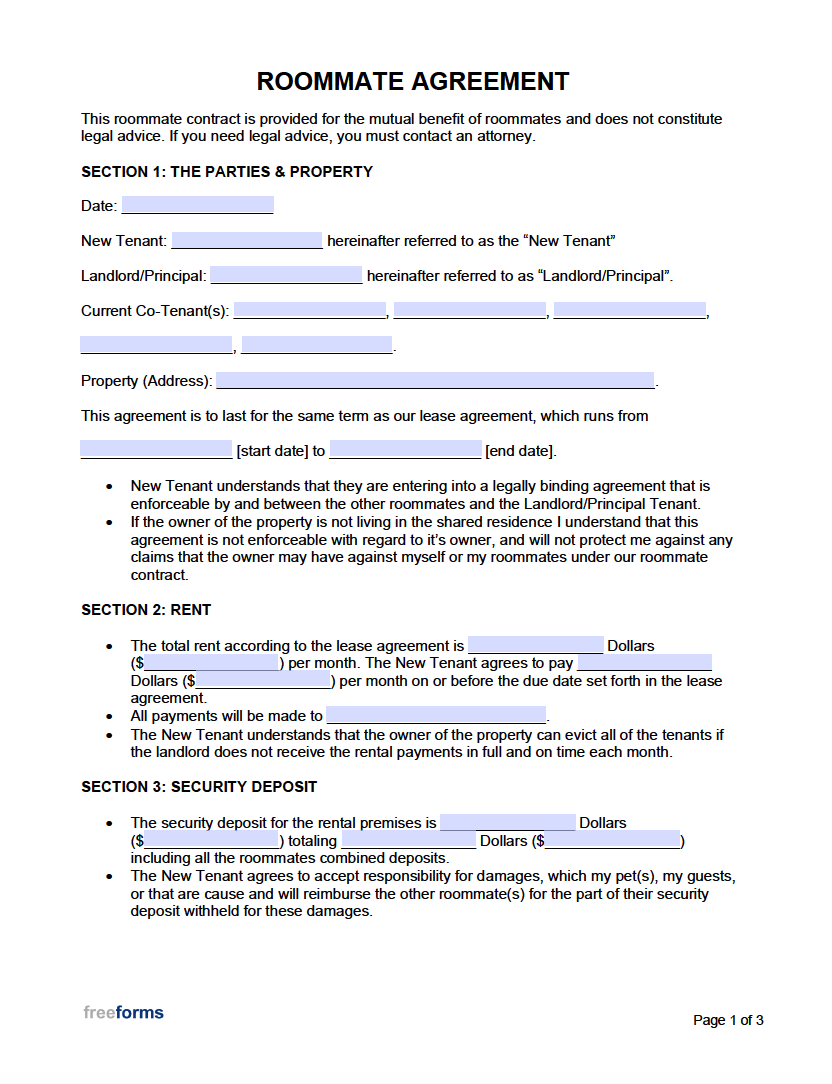By State
- Alabama
- Alaska
- Arizona
- Arkansas
- California
- Colorado
- Connecticut
- Delaware
- Florida
- Georgia
- Hawaii
- Idaho
- Illinois
- Indiana
- Iowa
- Kansas
- Kentucky
- Louisiana
- Maine
- Maryland
- Massachusetts
- Michigan
- Minnesota
- Mississippi
- Missouri
- Montana
- Nebraska
- Nevada
- New Hampshire
- New Jersey
- New Mexico
- New York
- North Carolina
- North Dakota
- Ohio
- Oklahoma
- Oregon
- Pennsylvania
- Rhode Island
- South Carolina
- South Dakota
- Tennessee
- Texas
- Utah
- Vermont
- Virginia
- Washington
- West Virginia
- Wisconsin
- Wyoming
What is a Roommate Agreement?
A roommate agreement is a contract that is separate from the lease made between the occupants of a shared household. Its purpose is to clarify the obligations of each member of the property in order to create a harmonious environment. Various components that you would not find in a regular rental contract are covered within the document, making it a legitimate record of the standards expected by all the residents inhabiting the premises. If at any time a roommate fails to meet one of the document’s guidelines, this form can be enforced to either oust the infringing party or ensure that they rectify the issue.
How to Find a Roommate
In today’s world, many individuals prefer to cut the cost of living by sharing a residence with others, especially those who live in bigger cities where the rents can be quite high. Having said this, it is crucial that you select a roommate that you feel will be responsible and not cause friction in the household. Below is a step-by-step guide that can enhance your chances of pairing up with the right individual to share a rental property with.
Step 1 – Make Sure You Can Add a Roommate

Unless you are the owner of the property, you are going to want to first review your lease to see what the rules are concerning the addition of a new roommate. If there are no details regarding this issue, you should confer with the landlord as to whether or not they will permit another occupant to live on the premises. Most landlords are accomodating in regard to this matter as long as the number of roommates corresponds with the number of bedrooms in the unit. Depending on their requirements, the new resident may be considered:
- Co-Tenant – The landlord may request that the individual be added as a tenant to the lease and be subject to the same screening process that the other lessee(s) underwent.
- Occupant – The lessor may want to list the roommate as an occupant on the rental agreement just so they are aware of who is residing on the premises.
- Sub-Tenant – Although this wouldn’t involve a sublease agreement, which is only used to sublet an entire property to another individual, the newcomer may be identified as a “subtenant” meaning that the main tenant is responsible for their occupancy.
(Note: When asking to add another individual to the current living situation, there is always a chance that the landlord may seek to increase the rent, request more money for the security deposit, or even demand that a new rental contract be written up altogether.)
Step 2 – Reach Out to People You Know

Your first approach when looking for a roommate should be trying to find someone that you know. This way, there is already an established rapport between the parties and you will feel more secure. To do this, you should start by:
- Contacting Friends & Family – Scroll through the contacts in your phone and text any individuals you think would make a good roommate. Maybe one of these people is in need of a new living situation, and if not, maybe they could recommend someone who is seeking a co-tenancy.
- Posting on Social Media – This is probably the best way to get the word out that you are in need of a housemate. Here, you will be able to reach any friends, family members, co-workers, and acquaintances that follow you. The most popular platforms being Facebook and Instagram.
Step 3 – Searching Online

If sharing space with a familiar party is out of the question, whether you are living in a new area or just can’t find anyone who needs housing, you may turn to the aid of various online services. Providers of these services would include:
Websites:
Apps:
Step 4 – Meeting with Potential Roommates

Whether you created an ad or just responded to others’, you should eventually find someone that seems like an acceptable candidate. Prior to meeting up, you should discuss any aspects of the tenancy that you feel are essential to a balanced roommate relationship. If they are on the same page, you can schedule an interview by taking the following measures:
- Meeting in a Public Place – As you probably know by now, the internet has its fair amount of imposters who may be trying to scam others. This is why it is imperative that you meet with the prospective roommate in a public place where you feel safe. By doing this, you have a chance to vet them in person without putting yourself into a risky situation.
- Preparing Questions – Before your encounter, you should prepare an array of questions to better understand where this person is coming from. Inquire about what they do for work, are they enrolled in school, what are their interests, etc.
- Addressing the Standards – Be ready to speak about the important elements of the occupancy, it is better to be blunt than to dance around the issues. Tell them your expectations and ask about theirs.
Step 5 – Screening the Roommate

If you are the owner or principal tenant of a property that you plan to share with a new roommate, you may want to consider investigating their background by having them submit a rental application. By doing this, you will be able to verify information regarding their credit score, past rentals, job history, and criminal background, as well as obtain the contacts of references that can vouch for them as a reliable person. Websites that can assist you in running a background check for the applicant include:
Step 6 – Create a Roommate Agreement

Once you have found a roommate that you feel confident about living with, it will be time to carry out the roommate agreement form. This should not be confused with a lease agreement, which is a contract that is specifically between the landlord and tenant of the property. Rather, it is a document that holds all parties accountable concerning their role as a fellow housemate. The primary sections of the agreement that should be established include:
- Identification of the Parties – List the names of all the individuals partaking in the shared residence.
- Dates of Tenancy – How long is the new occupant committing to stay?
- Expense Obligations – What portion of the rent, security deposit, and utilities is the new roommate required to pay?
- Guidelines – Attached to the document should be a list of the house rules and any duties/choirs that are expected out of the individual.
After filling in each area of the form, all participants should sign the document to confirm that they understand the stipulations made within the agreement. Congratulations! You have now successfully created a new roommate relationship.
Frequently Asked Questions (FAQ)
Are Roommate Agreements Legally Binding?
A roommate agreement is a legally binding contract. If you have a completed copy of this agreement that was signed by all parties, it is proof that there was an accord between certain individuals concerning how a roommate relationship will transpire. Now, if one of the parties does not adhere to the content of the agreement, the opposing party may present this document in court to demonstrate how the individual(s) was/were in breach of contract.
What if Your Roommate Abandons the Lease Agreement?
When a roommate abandons a lease agreement, it can become a bit of a sticky situation. If the roommate is a formal co-tenant listed on the lease agreement, they are technically liable to uphold the terms of the document, but at the same time, the remaining co-tenant is still liable to continue to pay the full amount of the rental payments to the landlord. Here are some actions that tenants may carry out under these circumstances:
- Small Claims Court – The remaining tenant may take the abandoning tenant to small claims court in an effort to collect the money for future rent payments. This can be more difficult than it seems as it could take more time and money than it is actually worth. Plus, if the remaining tenant wins, they could still have trouble collecting the actual funds from the other party.
- Notifying the Landlord – The best option would be for the remaining co-tenant to notify the landlord of the situation as soon as possible. The sooner they inform them of the situation, the sooner both parties can work towards a solution.
(It is recommended for the individuals looking to become co-tenants to also execute a roommate agreement to outline a specific protocol for this type of predicament.)
How Do You Evict a Roommate?
The procedure for this action heavily depends on whether or not the unwanted roommate is listed within the lease agreement as a co-tenant. Review the options below to see which scenario applies to you:
- Sole Tenant – If you are registered as a tenant within the lease agreement and the roommate that you are seeking to evict is not, you will have more authority to remove the unwanted roommate from the premises. That being said, if a separate roommate agreement was executed between the two (2) parties (and any other additional roommates), then the roommate up for eviction must be in violation of the contract in order to be properly expelled.
- Mutual Tenants – If both parties are registered within the main lease agreement, the roommate looking to evict the other should then contact the landlord and state the reasons why the other roommate is in violation of the lease, and why they should be evicted. (Most landlords will want to verify how the lease payments will be satisfied each month with the absence of the co-tenant.)
Sample Roommate Agreement
Download: Adobe PDF, MS Word (.docx)



